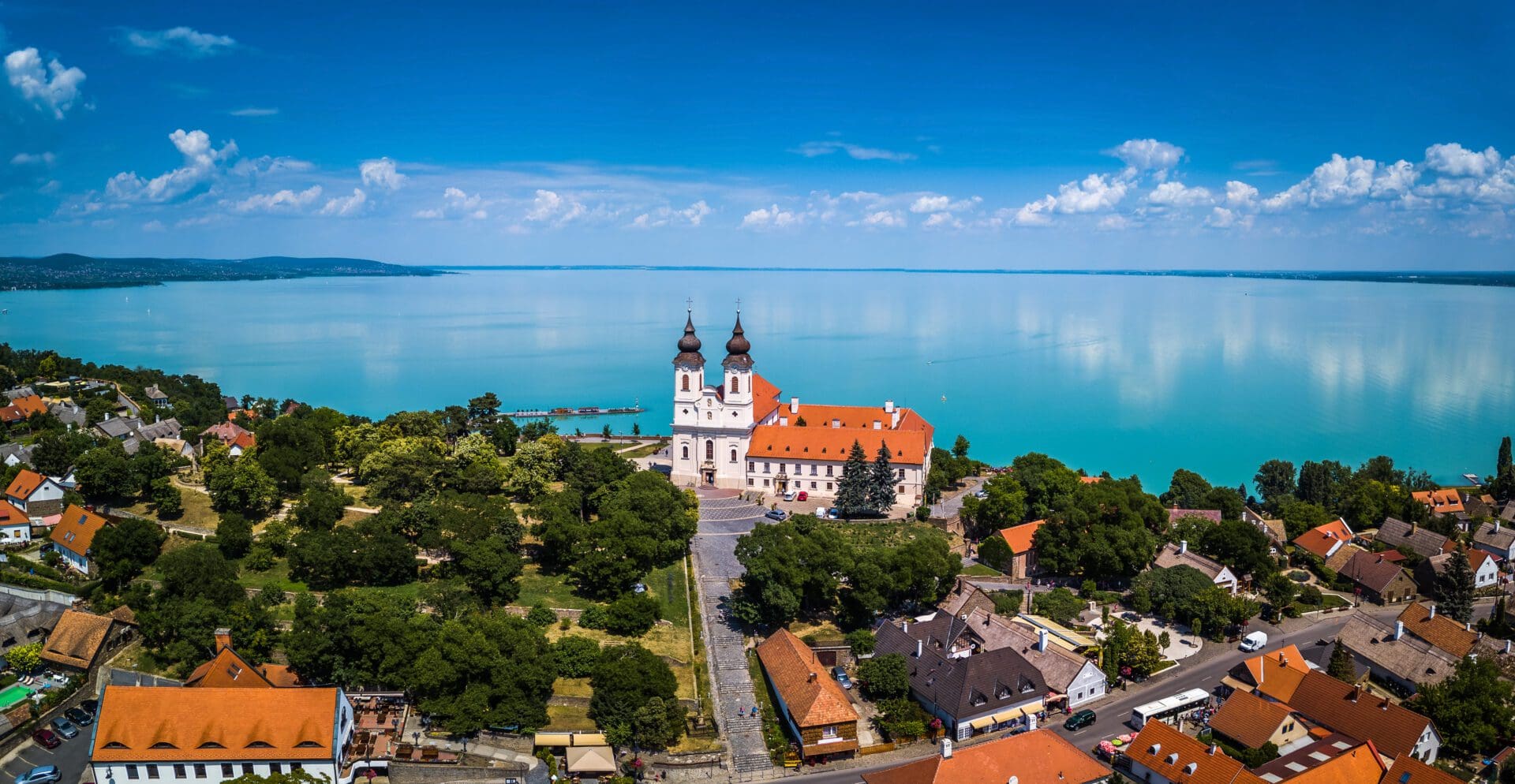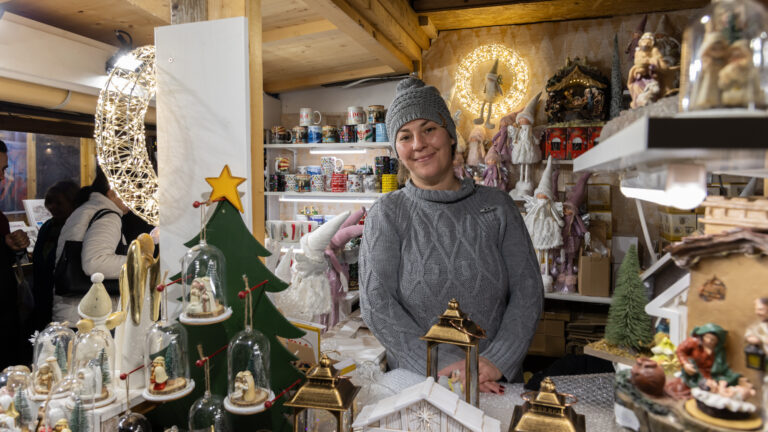The Tihany Peninsula, located on the northern shore of Lake Balaton, has undergone remarkable development in the past decade. Parks, squares and promenades have been renewed—all in the unique and traditional style of the small village of Tihany. The value of the unaltered traditional architecture of Tihany was recognised a long time ago, and the architects renovating the tourist sites in the area always respected the local traditions in order to preserve the unique face of Tihany, which is untouched by modernity. Thanks to its exceptional architectural and historical heritage, as well as the breath-taking views of Lake Balaton from the hills of Tihany, the village is very popular with tourists. This year, 35,000 overnight stays were registered on the peninsula in June and 58,000 in July; in the first half of 2022, accommodation providers achieved an income of around HUF 1.3 billion.
Arriving at the peninsula, the first thing visitors notice are the purple fields covered with lavender. The peninsula is famous for its lavender cultivation—the first lavender field in Tihany was planted in 1926 by Gyula Bittera, a Hungarian expert of medical herbs, on a parcel rented from the nearby abbey. The lavender brought to Hungary from France found fertile soil on the peninsula. Although lavender cultivation flourished in Tihany for two decades in the mid-1900s, the practice largely faded into oblivion from the 1950s. It was then resuscitated in the 1990s, and the enchanting lavender-covered purple fields soon became a famous tourist attraction in Hungary. Every year, thousands of tourists stroll through the fields to harvest lavender, an activity very popular among young couples in Tihany in the summer. The peninsula’s souvenir shops offer a wide range of lavender-based products, from oils to various kinds of teas. Encouraged by the popularity of original Tihany lavender products, plans of the newly established Tihany Lavander Council to create a special trademark for authentic local lavender cultivators have recently come to light.
The king established the Tihany Abbey as an important regional religious centre in order to strengthen the Kingdom of Hungary’s Christian foundations
The panorama of Tihany is dominated by the Tihany Abbey, a Benedictine monastery founded by King Andrew I of Hungary in 1055. Hungary adopted Christianity half a century earlier, but pagan rebellions were still common during Andrew’s reign. The king established the Tihany Abbey as an important regional religious centre in order to strengthen the Kingdom of Hungary’s Christian foundations. The Establishing Charter of the Abbey of Tihany is known for including the oldest written words in the Hungarian language embedded in the mostly Latin text. The charter contains a total of 58 Hungarian words and expressions, the longest and best-known of which is feheruuaru rea meneh hodu utu rea (Fehérvárra menő hadi útra in modern Hungarian, meaning ‘onto the military road leading to Fehérvár’), which described the location of the monastery. Almost a thousand years later, only last year, the grave of Andrew I was discovered in the crypt of the abbey. Many have been buried in the crypt over the centuries, but carbon isotope analysis of the bones has shown that at least two men’s bones have been laying there since the 11th century. Since the crypt was reserved exclusively for the royal family in that century, the bones clearly belong to King Andrew I and his son, Prince David. Andrew I is the only medieval Hungarian king whose grave has been preserved to this day.
Andrew I was the fourth Hungarian king. From his time onwards, the monastery played an important role in the lives of many Hungarian rulers, including the last monarch of the country. The last Hungarian king, Charles IV (1887-1922) spent his last days in Hungary in the Tihany Abbey before he was exiled. In the 1920s, after his abdication and the dissolution of the Austro-Hungarian Empire, he made several attempts to retake the throne, the last time on 26–31 October 1921, but his efforts were ultimately unsuccessful due to the lack of support from the Hungarian political leadership. The rooms where he lived with his wife for a couple of days before being deprived of the throne and exiled from the country were popular pilgrimage sites for decades among Hungarian ‘legitimists’, or royalists, who supported the restoration of the Hungarian throne. While these spaces were destroyed during the state socialist period, last year they were restored and opened to public after extensive historical research.
The history of Tihany is a story of endurance and beauty. Tihany witnessed the early days of the Kingdom of Hungary, and ultimately survived all Hungarian kings. The history of the abbey faithfully reflects the troubled chapters and golden ages that Hungary experienced. But Tihany is not just about its impressive history. The beauty of the peninsula has always been a source of inspiration for many artists, poets—and lovers. The purple lavender fields and the fragrance of lavender oil still capture the imagination of everyone who visits Tihany, the Pearl of Hungary.
Related articles:







